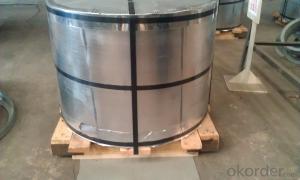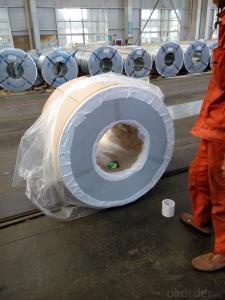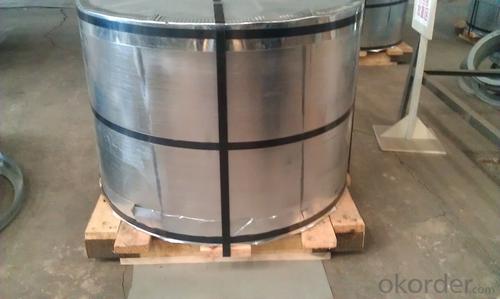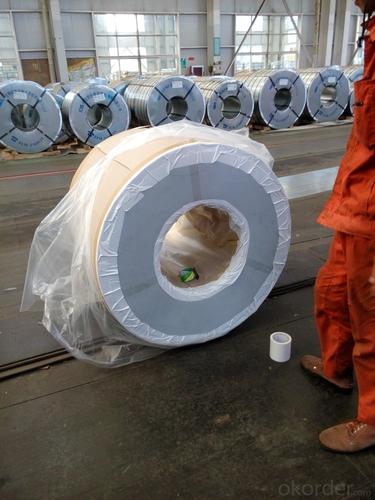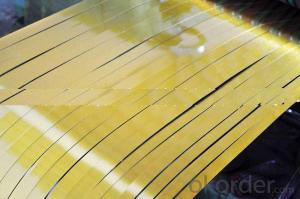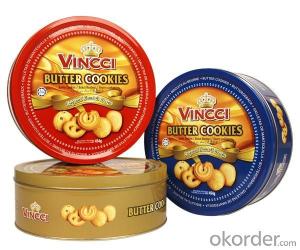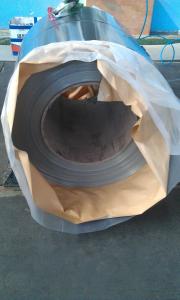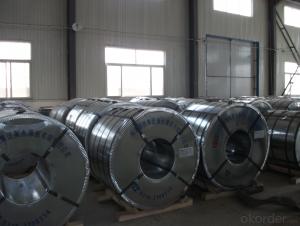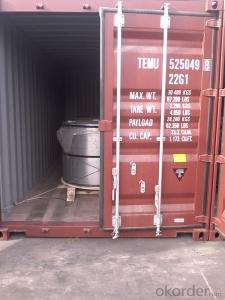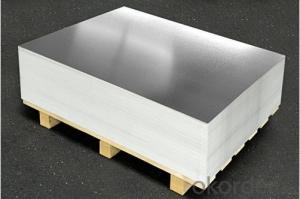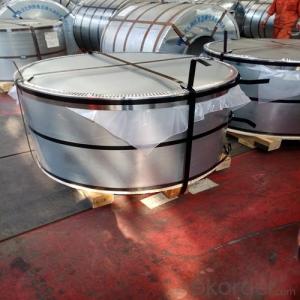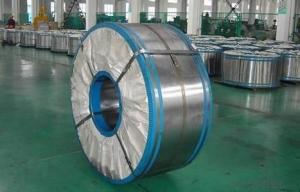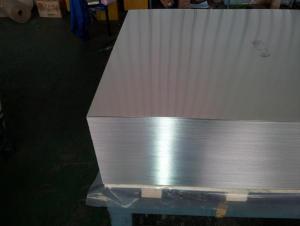Electrolytic Tinplate Metal Package Useage of Chemical or Industrial Use
- Loading Port:
- Tianjin
- Payment Terms:
- TT OR LC
- Min Order Qty:
- 50 m.t.
- Supply Capability:
- 30000 m.t./month
OKorder Service Pledge
OKorder Financial Service
You Might Also Like
Specification
1.Structure of Electrolytic Tinplate Metal Package Useage of Chemical or Industrial Use Description
The tinplates are specified as per the steel base, extent of tempering, the coating weight, annealing method and the surface finish.
The base steel is continuously cast and aluminum killed. The base steel can be single reduced or double reduced. The base steels are of the following three types.
2.Main Features of the Electrolytic Tinplate Metal Package Useage of Chemical or Industrial Use
Appearance – Tinplate is characterized by its beautiful metallic luster. Products with various kinds of surface roughness are produced by selecting the surface finish of the substrate steel sheet.
Paintability and printability – Tinplates have excellent paintability and printability. Printing is beautifully finished using various lacquers and inks.
Formability and strength – Tinplates have got very good formability and strength. By selecting a proper temper grade, appropriate formability is obtained for different applications as well as the required strength after forming.
Corrosion resistance – Tinplate has got good corrosion resistance. By selecting a proper coating weight, appropriate corrosion resistance is obtained against container contents. Coated items should meet 24 hour 5 % salt spray requirement.
Solderability and weldability – Tinplates can be joined both by soldering or welding. These properties of tinplate are used for making various types of cans.
Hygienic – Tin coating provides good and non toxic barrier properties to protect food products from impurities, bacteria, moisture, light and odours.
Safe – Tinplate being low weight and high strength makes food cans easy to ship and transport.
Eco friendly – Tinplate offers 100 % recyclability.
Tin is not good for low temperature applications since it changes structure and loses adhesion when exposed to temperatures below – 40 deg C.
3.Electrolytic Tinplate Metal Package Useage of Chemical or Industrial Use Images
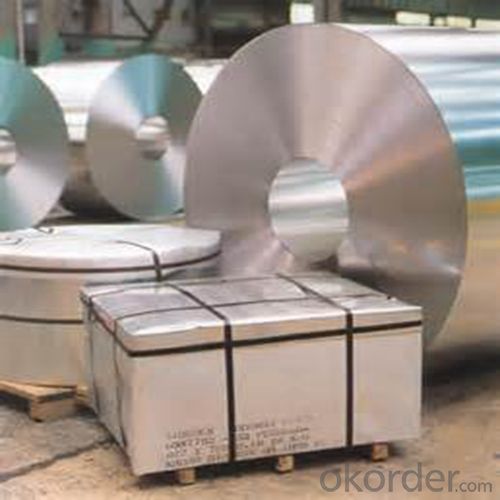
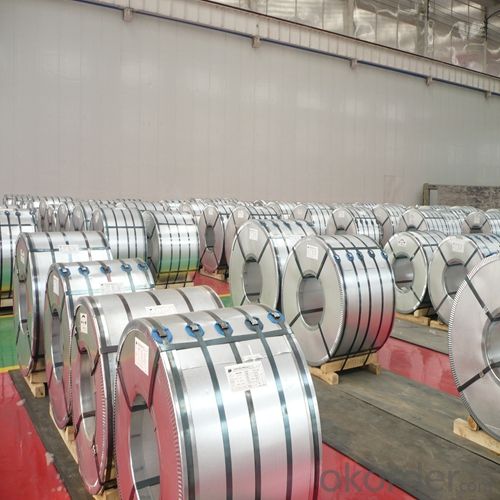
4.Electrolytic Tinplate Metal Package Useage of Chemical or Industrial Use Specification
Specification of :
Standard: ISO 11949 -1995, GB/T2520-2000,JIS G3303,ASTM A623, BS EN 10202
Material: MR,SPCC
Thickness:0.15mm - 0.50mm
Width: 600mm -1150mm
Temper: T1-T5
Annealing: BA & CA
Coil Inner Diameter: 508mm
Weight: 6-10 tons/coil 1~1.7 tons/sheets bundle
Passivation:311
Oil: DOS
Surface: Finish,bright,stone,matte,silver
5.FAQ of Electrolytic Tinplate Metal Package Useage of Chemical or Industrial Use
- Which port do you ship from?
We ship from China Shanghai port.
- What is your Minimum Order Quantity?
Usually MOQ is 50tons for one single size, for trial order, it can be 25 tons.
- Q: How thick is tinplate?
- Tinplate typically has a thickness ranging from 0.13 mm to 0.49 mm.
- Q: What are the regulations regarding tinplate packaging?
- The regulations regarding tinplate packaging vary depending on the country or region. However, in general, tinplate packaging must comply with certain standards to ensure its safety and suitability for use. These standards may include specifications for the tinplate material, its thickness, coating composition, and overall quality. Additionally, regulations often exist concerning labeling requirements, such as providing accurate information about the contents, proper handling instructions, and any necessary warnings. It is essential for manufacturers and suppliers to stay updated on the specific regulations applicable to their respective markets to ensure compliance and consumer safety.
- Q: What are the main challenges in tinplate warehousing?
- One of the main challenges in tinplate warehousing is the fragile nature of the product. Tinplate is susceptible to scratching, denting, and corrosion, so careful handling and storage procedures are necessary to prevent damage. Additionally, due to its relatively low melting point, tinplate requires proper temperature and humidity control to avoid deformation or discoloration. Lastly, tinplate is often packaged in large and heavy rolls, making logistics and space utilization critical challenges in warehousing operations.
- Q: Can tinplate be used for kitchenware?
- Yes, tinplate can be used for kitchenware. Tinplate is a type of steel coated with a thin layer of tin, which provides corrosion resistance and makes it suitable for food contact applications. It is commonly used for making cans, containers, and other kitchen utensils due to its durability, easy cleaning, and ability to keep food fresh.
- Q: How does tinplate compare to plastic packaging in terms of sustainability?
- Tinplate packaging generally has a higher sustainability profile compared to plastic packaging. Tinplate is a recyclable material that can be reused multiple times without losing its properties. It has a low carbon footprint, as it requires less energy to produce compared to plastic. Additionally, tinplate can be easily separated from other waste during recycling processes, making it more efficient for recycling systems. On the other hand, plastic packaging often ends up in landfills or as litter, taking hundreds of years to decompose and causing environmental harm. However, it is important to note that the sustainability of tinplate packaging also depends on factors like the energy source used during production and recycling rates in a particular region.
- Q: How is tinplate used in the packaging industry?
- Tinplate is commonly used in the packaging industry as it provides a protective and durable coating for various products. It is often used to create cans and containers for food, beverages, and other consumer goods. Tinplate ensures the preservation of the contents, prevents contamination, and extends shelf life. Additionally, its versatility allows for easy printing and labeling, making it an ideal choice for branding and marketing purposes.
- Q: What are the common safety features for tinplate packaging?
- Some common safety features for tinplate packaging include tamper-evident seals, child-resistant closures, and durable construction to prevent breakage or leakage. Additionally, many tinplate packaging products are also made with food-grade materials to ensure the safety of the contents.
- Q: How has tinplate evolved over the years?
- Tinplate has evolved significantly over the years, primarily due to advancements in technology and manufacturing processes. Originally, tinplate was made by coating iron or steel with a thin layer of tin to prevent corrosion. However, the process has evolved to include various coatings, such as organic, chrome, and polymer coatings, that offer improved protection and durability. Additionally, the production techniques have become more efficient, allowing for higher quality and faster manufacturing of tinplate products. Moreover, the application of tinplate has expanded beyond traditional uses in packaging to include automotive, construction, and electrical industries, further driving its evolution.
- Q: What are the different ways to recycle tinplate packaging?
- There are several different ways to recycle tinplate packaging. One common method is to separate the tinplate from other materials, such as paper or plastic, and then melt it down to be used in the production of new tinplate products. Another way is to repurpose the tinplate packaging by transforming it into new and creative items, such as decorative storage containers or art pieces. Additionally, tinplate packaging can also be collected and sent to recycling facilities where it will be properly processed and recycled into various new products.
- Q: What are the main applications of tinplate in the household goods industry?
- Tinplate is mainly used in the household goods industry for packaging food and beverages, such as canned goods, coffee, tea, and powdered milk. It provides a protective barrier against moisture, air, and light, ensuring the quality and freshness of the products. Additionally, tinplate is also used for making various household items like kitchen utensils, storage containers, and decorative items due to its durability and corrosion resistance properties.
Send your message to us
Electrolytic Tinplate Metal Package Useage of Chemical or Industrial Use
- Loading Port:
- Tianjin
- Payment Terms:
- TT OR LC
- Min Order Qty:
- 50 m.t.
- Supply Capability:
- 30000 m.t./month
OKorder Service Pledge
OKorder Financial Service
Similar products
Hot products
Hot Searches
Related keywords
